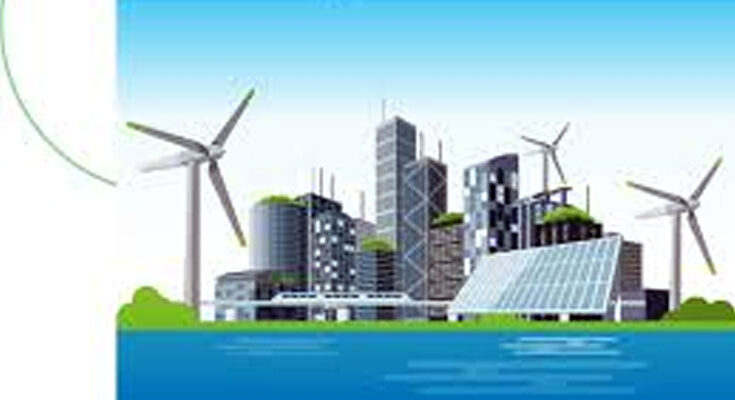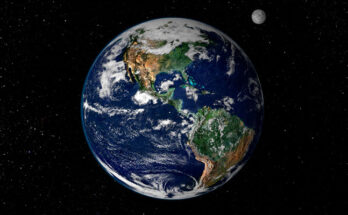Column By Mike Bibb
“You may say I’m a dreamer, but I’m not the only one. I hope someday you’ll join us, and the world will live as one.”
Imagine, John Lennon, Yoko Ono, 1971
I’m not certain Vice President Kamala Harris was channeling John Lennon’s 1971 song “Imagine,” when speaking at the Clean Transit Event in the Eisenhower Executive Building on March 7, 2022, but it sort of sounded like it.
The assemblage was attended by fellow government environmental enthusiasts, Cabinet and Congressional members, and others interested in promoting climate change and renewable energy agendas.
She began her comments by reminding the gathering that when she was Attorney General of California, she visited a community so polluted with vehicle exhaust fumes that the natural act of breathing was a difficult task.
“The first time I went to Mira Loma, you could taste the metal in the air,” she informed the conference attendees. “My eyes burned. The toxicity in the air was that thick.”
Mira Loma is a small community west of Riverside in Southern California.
Continuing, Kamala advised, “And again, the fact is there are many Mira Lomas all over our country, communities that have been left out and left behind, and where pollution from heavy trucks and buses has made the air poisonous to breathe.”
An obvious cause of pollution is the presence of tens of millions of people residing in the Southern California area. Human activity naturally generates all kinds of impurities.
Then she full-throttles into the clean air, green new deal thing, “And this pollution is also, of course, accelerating the climate crises, threatening the future not just of our communities but of the entire world. And this is not how it has to be.”
Not only the Mira Lomas in our country are in peril but, apparently, all the Mira Lomas on the planet. Including those in China, India, Russia, Europe, Africa, South America, Asia, and every other place the internal combustion engine is operating.
Maybe, Antarctica, too.
Wait, Kamala didn’t mention private cars and pickup trucks. No, she zeroed in on the heavier commercial machines, semi-trucks, buses, trains – vehicles that move products that keep our nation functioning.
That can of Dinty Moore stew didn’t magically appear on a grocery store shelf – a truck first had to bring it. Before that, another truck transported it to the Dinty Moore food distribution center. Before that, a truck moved it from the cannery to the food distribution center. Before that, farmers and ranchers harvested and trucked their vegetables, fruits, and meats to the cannery. Before that, farmers and ranchers purchased seed, fertilizers, and feed from a farm and ranch agricultural supply store. Which, of course, received their inventory by truck.
You get the picture. Virtually everything that moves in this country is moved by truck or train. With global commerce, giant ships and large cargo aircraft are also involved, using big diesel, electric/diesel, and jet engines to propel them.
After they reach the shore or the runway, it takes trucks to move the freight to its next destination.
Petroleum – oil, gas, diesel – is what maintains our economy. To my knowledge, a can of Dinty Moore stew has never been transported from points A, B, C, D, E, F, or G to my kitchen cabinets by a solar-powered, windmill or battery-motored 18-wheeler.
Coincidentally, I’ve noticed Russian tanks rumbling through Ukraine are also belching black clouds of smoke. Probably diesel exhaust. It appears the Rooskies are not overly concerned with climate change. I doubt President Vladimir Putin factored in the negative CO2 influences when formulating his invasion plans or smoke ascending from burning buildings his forces have bombed.
No, it’s the big trucks and buses that influenced Kamala to warble her contemporary version of Lennon’s Imagine – “Imagine a future: The freight trucks that deliver bread and milk to our grocery store shelves and the buses that take children to school and parents to work; imagine all the heavy-duty vehicles that keep our supply lines strong and allow our economy to grow – imagine that they produced zero emissions,” Harris stated.
I’m imagining right now. Then she tells the crowd, “Well, you all imagined it. That’s why we’re here today – because we have the ability to see what can be, unburdened by what has been, and then to make the possible actually happen.”
For the record, I’m not particularly opposed to green energy. It’s a viable source of fuel and in certain instances appropriate. However, I don’t believe it’s an adequate substitute to currently replace over a hundred years of petroleum-based societies.
Locally, imagine digging large open-pit copper mines without the use of big diesel-powered haul trucks and electric shovels. Expenses would quickly exceed profits.
Tremendous strides have been made over the past 40 years in extracting, cleaning, and dispensing fossil fuels, including coal. The United States has huge quantities of these minerals under our feet, an economy and infrastructure dependent upon them, and technologies that promise to increase efficiencies even more.
How many wind, solar, and battery units would it take to replace one natural gas, coal or nuclear fueled electrical power plant?
Priced an ordinary D-Cell Energizer flashlight battery lately? They aren’t cheap.
The government’s push for more sun, wind, and battery-powered equipment is a goal worth pursuing, but not at the expense of current forms of energy. A fully fueled diesel semi-truck can haul 80,000 pounds of weight multiple hundreds of miles. A train locomotive can pull hundreds of tons of weight even further.
Currently, no battery or solar-powered vehicle can match that – or come close. When renewable fuels become cost-effective, dependable, and widely available, then serious use of them will be more acceptable.
It’s a fantasy for government officials to recommend the public simply purchase expensive EVs – even with taxpayer-funded incentives – to reduce carbon emissions when the technology, reliability, and infrastructure cannot economically compete with existing fossil fuel vehicles.
It is nice to imagine, but the reality of the situation is still decades away. Especially in places where certain governments are not really concerned about how clean the air is. Which is about 75% of them.
Maybe, as a sign of goodwill, Jeff Bezos can equip his personal space rocket with battery, wind, or solar propulsion the next time he goes for a joy ride into the stratosphere.
It would be interesting to see if he gets off the launch pad.
The opinions expressed in this editorial are those of the author.









